GW,
Same ole drill, answers in red below:
"I understand your reasoning and desire for settings on the permanent side. I have found than even with the Uniflow Mic, settings still change a little. The following things seem to make the "permanent setting" a mythical dream: Air humidity, temperature and barometric pressure; density (helped a little by a baffle); powder batch, powder type. That's why I love a measure with a mic. So simple to change the setting a little....just twist and you can measure and record exactly how much you changed it."
I've been reloading a good number of years, both progressive or single stage, so like most reloaders I've had the pleasure and joy once upon a time of figuring out why my powder measure settings "magically changed over night?" . That's why I wrote pre-set, not permanently setup. Kinda like this press out of the box. Almost ready to go and with a few checks and adjustments, ready to go. I'm lucky this time to simply have the measures on hand to have one for each die plate setup, so I can minimize changeover time.
. That's why I wrote pre-set, not permanently setup. Kinda like this press out of the box. Almost ready to go and with a few checks and adjustments, ready to go. I'm lucky this time to simply have the measures on hand to have one for each die plate setup, so I can minimize changeover time.
Anyone who's new to reloading and reading this should be very aware of how much climate related changes affect gunpowder weight to volume. One should always check one's powder measure with a scale and adjust as needed before continuing to reload after changing setups or even stopping overnight.
"As for storage, my die plates are populated by dies only....including a powder-thru expander die (lower end of a case activated Uniflow or Hornady) and a Hornady Bullet feeder die. I could add a lockout die and still fit in the large clear index card boxes I bought at Walmart. I don't know where to buy clear boxes for that plus a whole powder measure....even a small Lee one....but I'll keep my eyes open."
I'm thinking the plastic shoe boxes carried by Big Lots might fill the bill for the Lees. Perhaps they carry a slightly bigger box that'll fit the larger powder measures. I could build a wooden rack, but would prefer something that could be stored easily in a roll away cabinet if I need my reloading room for a guest bedroom.
"The powder dies (base) I populate the die heads with, allow a permanent, locked height for the powder measure. You only have to undo the thumb screw, pop the spring off and lift the powder measure off the base....you don't change any settings. Then you can dump the powder, add new powder and change the repeatable mic setting for the next caliber die plate. Then drop the PTX into the powder die on the new plate, drop the powder measure on, slide on the spring, and screw the thumb screw down....Done for the next caliber."
I owned a Hornady LnL for over a decade before I purchased the Pro 2000. I ran both a Hornady and a Uniflow on top of the Hornady CAPD, a virtually identical setup to the RCBS CAPM, but you know that, you have both.
First about 7 years, I never even added a powder die/base to the measure. After that, I broke down and bought 3 of the bases, but also tried a couple Lee Pro Auto Disks because I had them from owning a Lee Classic Turret and was used to using them with Lee die sets. Before long, I found myself using the Lees for pistol powders and my older Hornady LnL powder measure setup for rifle. I could have upgraded/added the latest version of the CAPD, but the Lee's were inexpensive, worked well and allowed me to minimize adjustment in a caliber change.
I picked up these Dillon powder measures helping out a friend and a nice side benefit will be their larger volume over the Lees for large quantities of say, .45ACP. I'm not saying what you're doing (which is what I used to do) isn't reasonably quick, it is, but having a measure with each die plate is the ultimate convenience and ultimately, speed. If you don't have much time for reloading, this can be important and since different companies measures offer certain benefits over another's for specific applications and I have three brands on hand, I feel optimization of application is in order. Never mind the fact I'm totally spoiling myself.
"Your way certainly will work fine, but with one powder measure (with small cylinder) and three bases I can reload .45 .40 .357, and 9mm with little caliber change effort...and that includes the super simple quick change Hornady bullet feeder. I use another uniflow with the big cylinder for rifle. Separate bases is the key to speed with that method....Hornady's linkage on the RCBS Uniflow makes it easy, because separate bases are available directly from Midway....unfortunately, RCBS hasn't seen the light yet, and bases from them are begged parts, or $70 linkage kits for each. Ugh. I have a Hornady linkage kit and two RCBS linkage kits, and 2 extra Hornady bases (powder dies)...so far."
Yes, I've already experienced my method working very well on my LnL applications. Because I've traded/purchased used for most of it, I have very little cash invested in my extra measures. The two Dillon measures were basically free, except for the powder funnels, which I picked up used for a lot less cash.
If my guess is correct, I'll be using one of my Uniflows with the big cylinder and will be adding a large capacity reservoir to it as well. I'm debating if I want to try and pick up an older Hornady CAPD (pre-ptx) and powder measure to round out my big three (30-06, .308 and .223). I'm using surplus ball powder for the .223 right now, so I could use a Dillon measure as well. Yes, I am totally spoiling myself this time around.
"Let us know how the die plate anchor kits work.....just a tad skeptical. On a single stage press, runout can be improved by making the shellholders fit loose in the ram (by stretching the keeper spring a little) for the express purpose of allowing the case base to slide enough to align (find center) into the dies and not be forced into the dies less than perfectly aligned."
They may very well be an solution looking for a problem. The data they post on the write ups indicates other wise, but I don't know. I may try one or I may not. Before I do, I'll be checking run-out using standard die plates and doing some shooting. Lots of other things to spend one's money on in reloading, like powder, primers and bullets.
"One of the reasons I like the RCBS and Dillon presses a little better than Hornady's offering was the looseness that allows the same centering action to take place. Seems to me anchoring the head defeats that feature. Will be every interested to see if their product really helps or makes it worse. Staying tuned!"
Actually, the LnL bushings O-ring allows each individual bushing to have "give" to it and allows it to adjust to the brass and helps alignment. Separating the dies allows each one to act totally independent of the others vs. their being tied together on a die plate. To date, most tests run on run-out comparisons between the presses indicate the LnL bushings to be superior to the die plate/tool head in the run out department. If I didn't have a single stage press (with LnL bushings conversion installed) and I wasn't tired of my Hornady LnL, another one would have been preferable from an absolute convenience, cost and run out standpoint. My preference was for a new toy. This may cost me in die plates and assorted extra stuff as time goes on.




